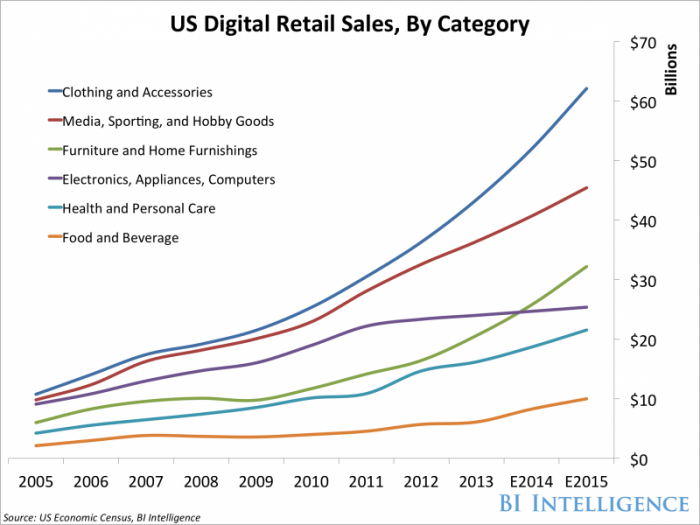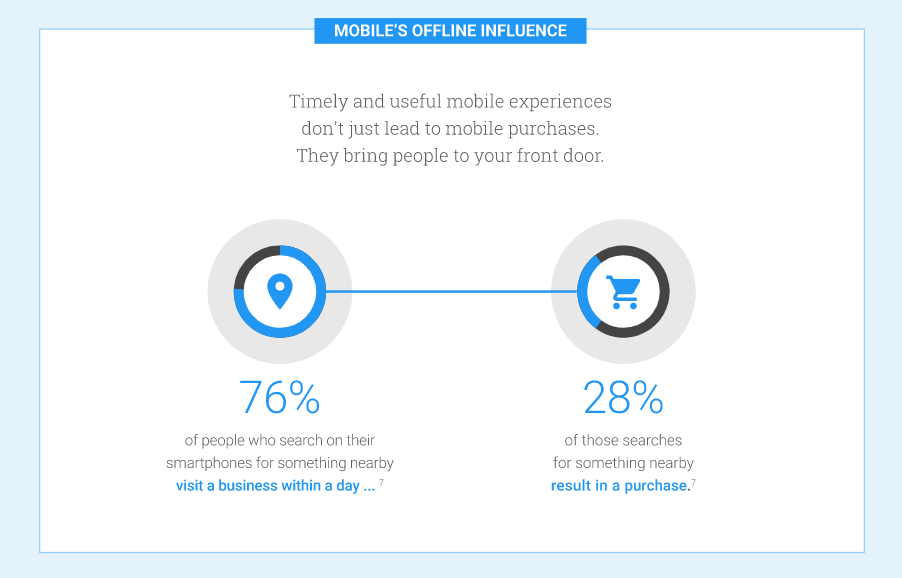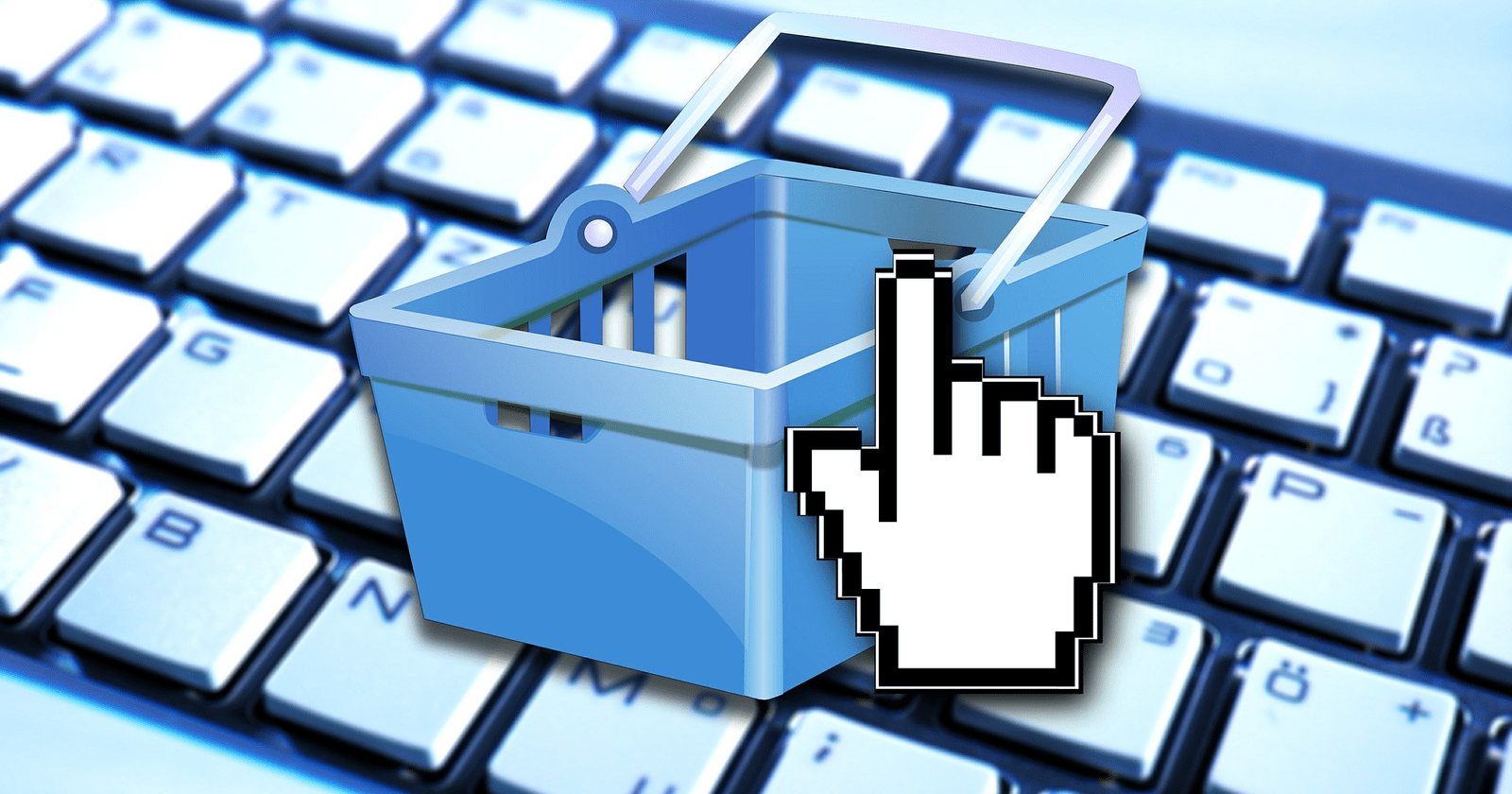There was a time when traditional brick-and-mortar stores were a thriving business.
On any given day, if you took a casual drive through Anytown, USA, you’d pass a brand-new shopping mall under construction.
Those days are coming to an end.
Traditional retail is facing real challenges – declining store traffic and malls across America set to close their doors.
But that isn’t the whole story for retail. Especially when you consider online channels.
(Spoiler alert: We’ll be talking about PLAs for Google Shopping. But you probably guessed that already.)
E-Commerce Is Growing Fast
In contrast to brick-and-mortar stores, e-commerce is growing. A lot.
The e-commerce market grew 15 percent last year and is projected to grow to more than $600 billion in the next 3-4 years.
Great. So e-commerce is growing. We knew that.
But did you know that there was a segment of online sales that was growing even faster than the already-impressive average?
You guessed it – it’s Google Shopping and its image-based ad format, Product Listing Ads (PLAs).
These powerful commerce ads have shown considerable growth, growing revenue more than 50 percent last year and accounting for more than half of all retail search clicks in both the U.S. and U.K. in Q2 of this year.
PLAs are such a huge success story that pretty much all the major channels in digital and e-commerce are either running similar ads or preparing to, including Facebook, eBay, Bing, and even Amazon.
 Digital retail stats for PLAs – E-commerce is set to grow to more than $600B in 2020. Image courtesy BusinessInsider.com
Digital retail stats for PLAs – E-commerce is set to grow to more than $600B in 2020. Image courtesy BusinessInsider.comBut Why PLAs? Why a Google Channel for E-Commerce at All?
All right, so we’ve established that PLAs for Google Shopping are the fastest-growing segment of the already-fast-growing e-commerce space. This brings us to the following question:
Why would a search-based channel – typically considered to be a lower-funnel play – be the next big thing for e-commerce, a space where traditionally, customers might be expected to prefer lower-commitment window shopping and browsing?
The answer: the customer buying journey is no longer what it once was.
There’s no simple, linear path from awareness to consideration to purchase – it’s now fraught with constant jumps back and forth between different stages and across different channels and platforms.
Customers aren’t just seeing an ad, marching into a store, and plunking their money down. They’re doing extensive online research. They’re using their phones more than a dozen times in an hour.
But while they’re spending more than half their time browsing on mobile, they’re spending only 15 percent of their money while browsing on mobile.
Another facet of the changing customer journey? Customers are in control.
The days of the biggest billboards dominating the highways, or the biggest TV spend blanketing the airwaves are over. Customers are tuning out advertisers in record numbers.
More online users are turning to ad blockers to rid themselves of annoying, irrelevant ads – 30 percent more than last year, in fact. In addition, we know that Google itself will unveil a new version of Chrome with a built-in ad blocker next year.
What does this have to do with PLAs for Google Shopping, or even search?
Because customers are now in control of their journey, the power of their intent is more important than ever.
Studies show that shoppers searching for specific products/services are actually more likely to want ads tailored to them – a Google report shows that 80 percent of users preferred ads tailored to their location, for instance.
In addition, three-quarters of shoppers doing a local search on mobile (and a third of shoppers doing a local search on desktop) go to a physical store location within 24 hours, and 28 percent of those shoppers go on to buy something while they’re there.
In other words, while broader store traffic numbers might seem to be going down, there’s a new kind of foot traffic that smart retailers are benefiting from – purposeful visits from informed shoppers who already know what they’re looking for.
 Google stats for PLAs: 75 percent of local searchers visit a storefront, 28 percent make a purchase.
Google stats for PLAs: 75 percent of local searchers visit a storefront, 28 percent make a purchase.So How Can You Win with PLAs for Google Shopping?
So far, we’ve gone through how traditional retail is flagging, but e-commerce is surging, and PLAs for Google Shopping are leading the charge.
So how do you, yourself, become a leader in PLAs?
In order to realize the full potential of PLAs, you need the secret weapon for digital: data.
What does that mean? It means that there are powerful incremental gains that you can pull from every single one of the individual stock-keeping units (SKUs) you sell.
Ideal bid levels will drive the highest volume and fattest profit margins. If you can set the bids for each of your products at that ideal bid level in each of your Google Shopping campaigns, you can massively lift your performance.
But look at all the data you need to parse for this – not just your product details (women’s dresses in different sizes, colors, fabrics, brand names, etc.) but your sales data, pricing, limited-time promotions, inventory and much more.
Doing this for one of your biggest products is a massive chore. Doing this for the thousands of different products you sell just isn’t humanly possible.
So how can you manage this?
- Big data processing: You need a way to be able to compile, process, and actually use all this data. New techniques such as data science (which parses these big data clusters to pull actual), usable insights, and machine learning (which uses data-driven insights to build predictive models), will help you make sure your individual Google Shopping campaigns are always running at the ideal bid levels to move the most high-margin products and bring you the highest returns.
- Reporting at scale: You need a way to quickly generate performance reports at scale for your entire inventory. (Ideally, something beyond Microsoft Excel, which has a tendency to crash after you add too many rows!) If you run a solution that limits your ability to store and process data, you’re hobbled – you won’t be able to quickly assess market conditions and identify errors that need to be corrected. This is why having metrics that aren’t limited by scale or reporting speed is crucial.
- Custom algorithms: To crack the data code, you need smart algorithms that can calculate ideal bid levels for you. To outpace your competitors, you need algorithms that go beyond simple efficiency metrics such as Return on Ad Spend (ROAS) and get you into pure profit territory by factoring in your Cost of Goods Sold (COGS). Having the flexibility to customize your bidding algorithm gives you the option to not just settle for efficiency percentages, but to skip ahead directly to building out your bottom line.
Takeaways
Even though the world of traditional retail seems like it’s in a slump, smart retailers are turning to online channels.
The most promising online channel for retail is Google Shopping, which offers unlimited opportunity to astute merchants that are equipped to deal with challenges of data, reporting, and custom bidding algorithms.
Retail isn’t necessarily going away, but it’s going through a transformation where the smartest retailers – the ones who recognize this significant market shift – can win big.
Image Credits
Featured Image: Pixabay
In-Post Image 1: Business Insider
In-Post Image 2: Think with Google





